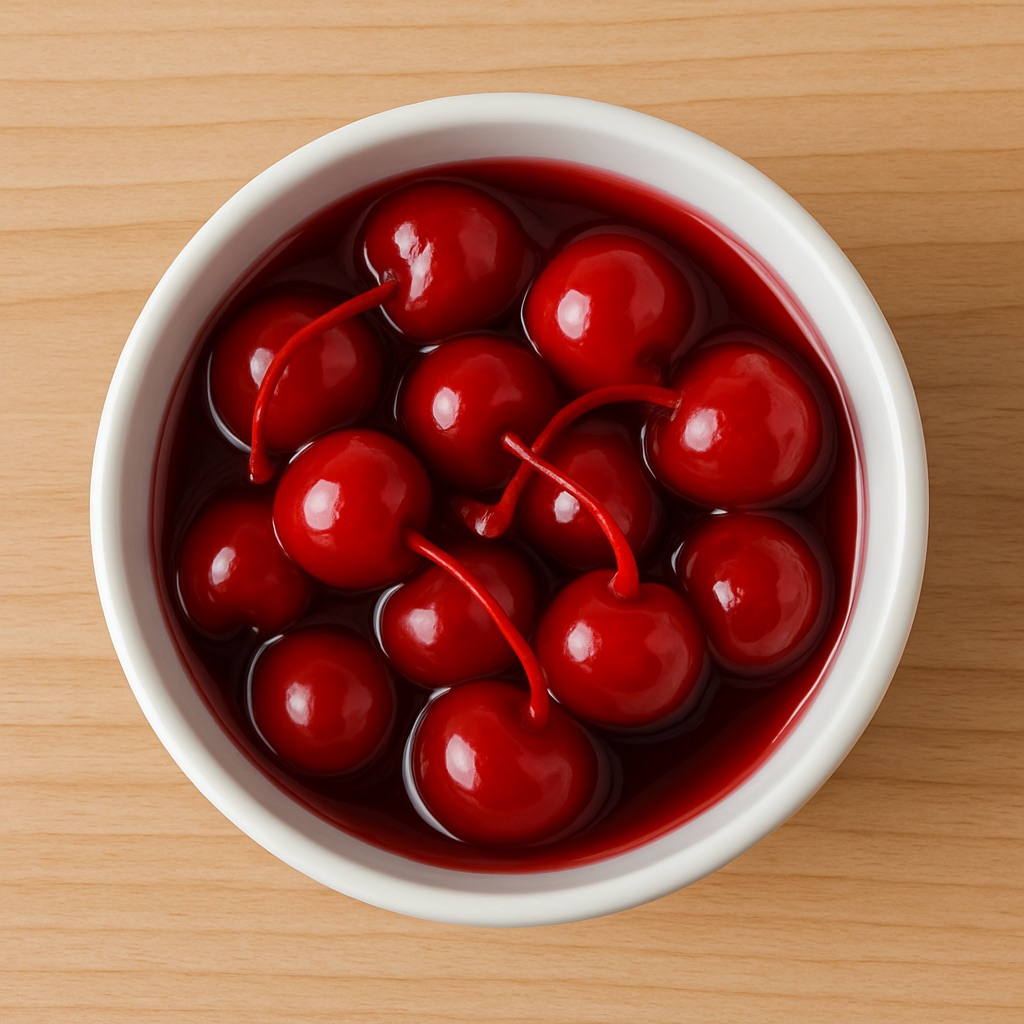Last updated on
In general, chalk is not toxic if ingested or inhaled; however, frequent or large amounts may lead to digestive issues or lung irritation.
Key takeaways:
- Chalk is generally non-toxic, but large amounts can cause digestive issues and lung irritation.
- Chalk is primarily composed of calcium carbonate and is considered non-toxic.
- Ingesting large amounts of chalk can cause gastrointestinal discomfort and respiratory irritation.
- Chalk labeled as “anti-dust” may contain crystalline silica, which can be harmful if inhaled over time.
- Seek medical attention if someone ingests chalk and experiences symptoms or if a significant amount is consumed.
Composition of Chalk
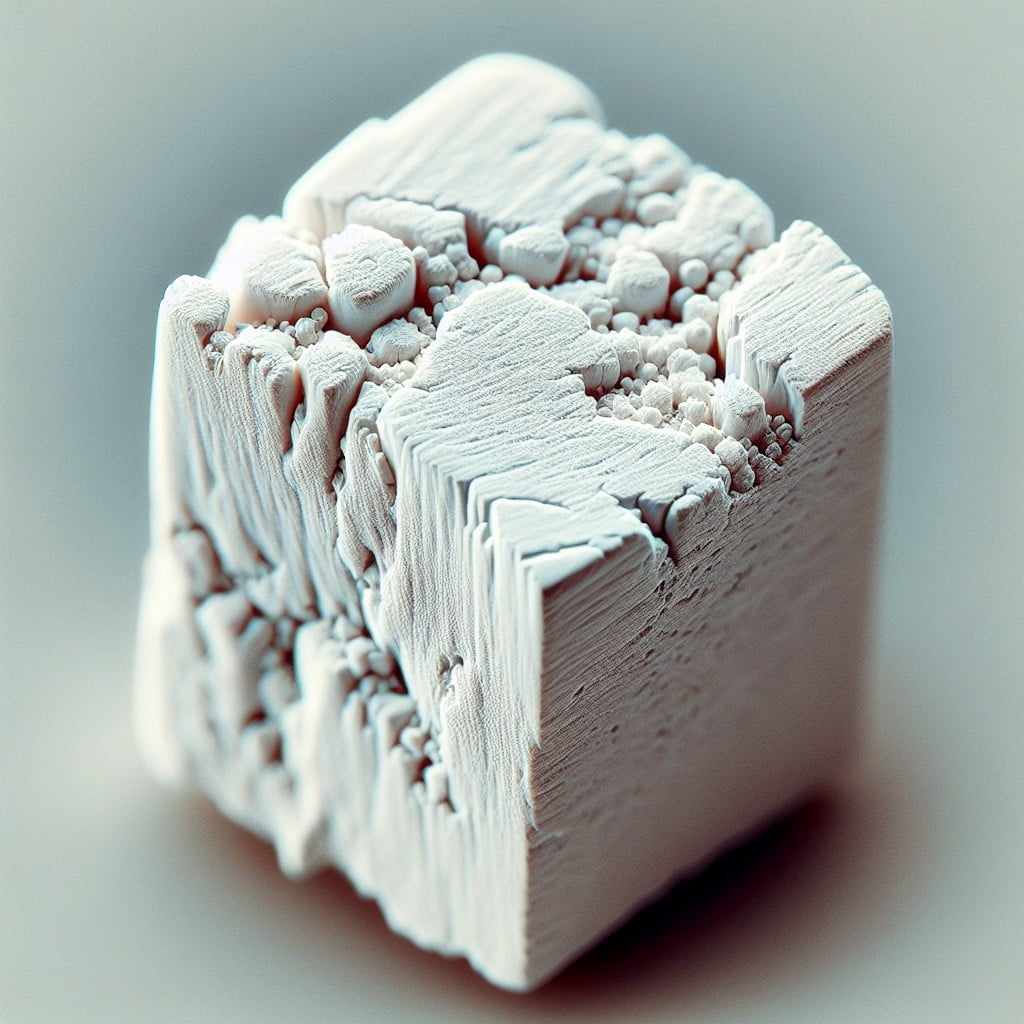
Chalk primarily consists of calcium carbonate, a substance found naturally in the remains of marine organisms. It’s the main ingredient in limestone and is largely non-toxic.
In some cases, chalk may include additives like color pigments or substances to enhance texture. These additives are generally considered safe, provided the chalk is used as intended.
When manufactured for classroom or sidewalk use, this material adheres to strict safety standards to ensure it is harmless when handled. However, industrial-grade chalk used for various manufacturing processes could contain different compounds and should not be used in the same manner as school or sidewalk chalk.
Toxicity Level
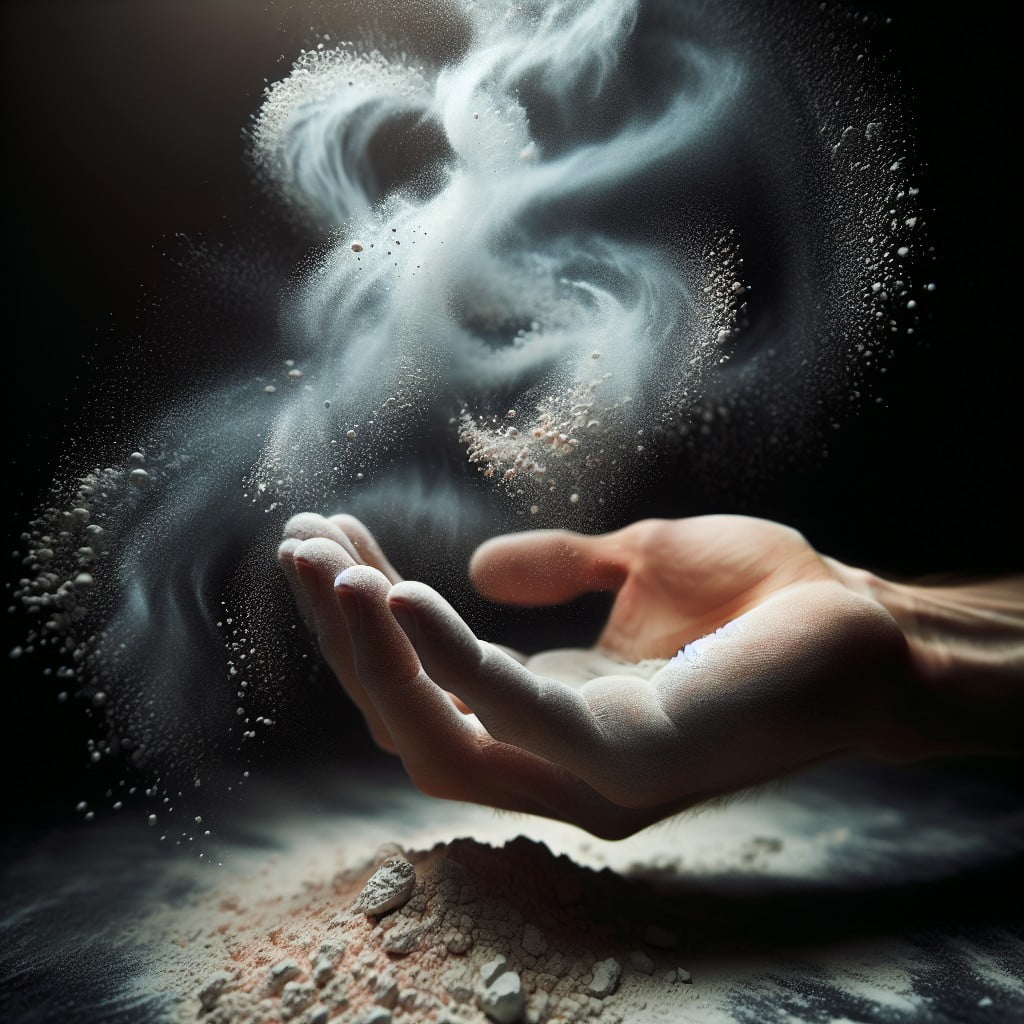
Chalk, primarily composed of calcium sulfate or calcium carbonate, is considered nontoxic. It’s a common material found in classrooms worldwide and is generally safe for use.
Ingestion of small amounts typically does not lead to harmful effects. However, if someone consumes large quantities, it may cause irritation in the gastrointestinal tract, presenting as stomach ache, nausea, or constipation.
It’s important to note that while it’s not poisonous, it’s not meant for consumption, and excessive intake may prompt a concerning health issue, especially in individuals with sensitivities or pre-existing conditions.
Symptoms of Chalk Ingestion
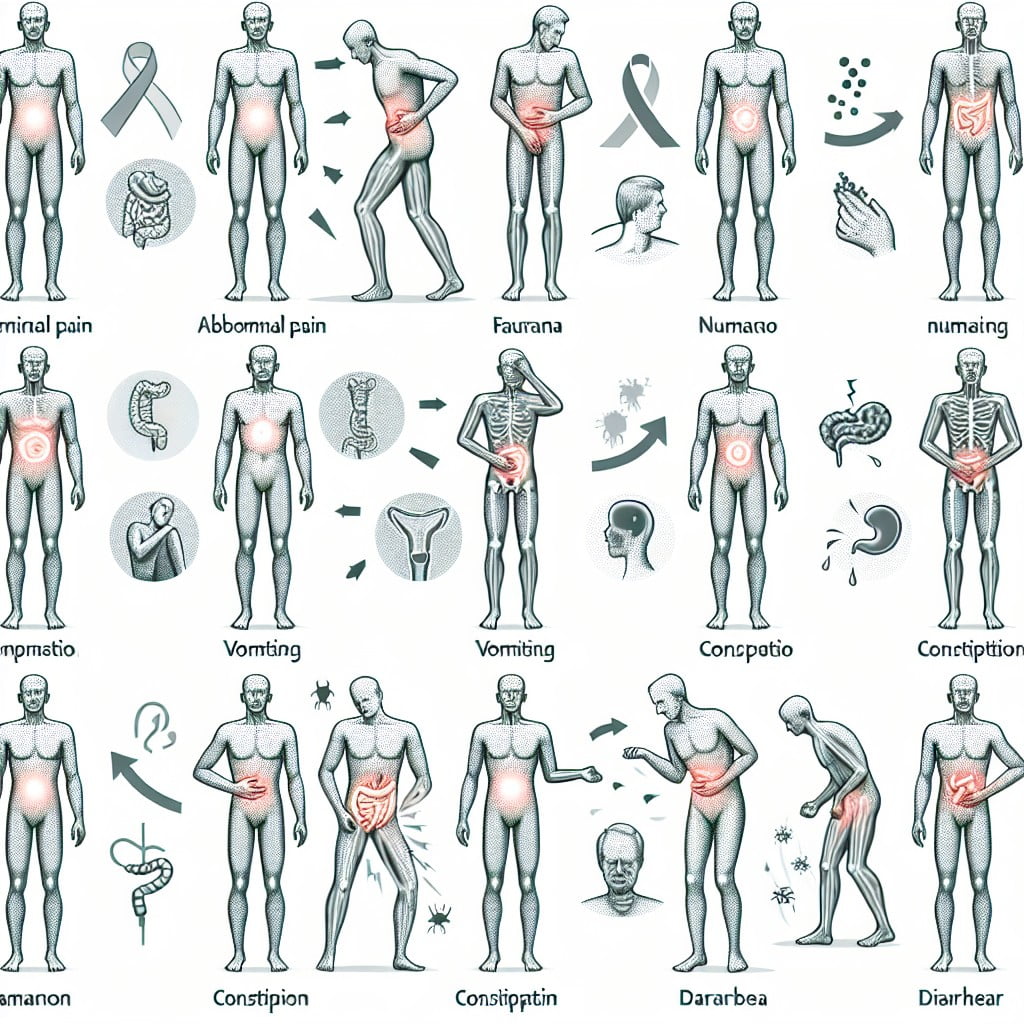
Ingesting small quantities of chalk often results in minimal to no symptoms due to its non-toxic nature. However, consuming larger amounts or dust from chalk might lead to:
- Gastrointestinal discomfort: This includes symptoms such as stomach ache, nausea, or vomiting, as the digestive system reacts to the foreign substance.
- Constipation or diarrhea: Chalk’s composition can affect bowel movements, leading to temporary constipation or diarrhea.
- Choking hazard: Chalk pieces can pose a risk of choking, especially for children, as they might not chew it properly before swallowing.
- Respiratory irritation: Inhaling chalk dust may cause coughing or shortness of breath due to irritation of the respiratory tract.
It is important for the individuals who experience any of the above symptoms after chalk ingestion to seek medical advice.
Poisonous Ingredient
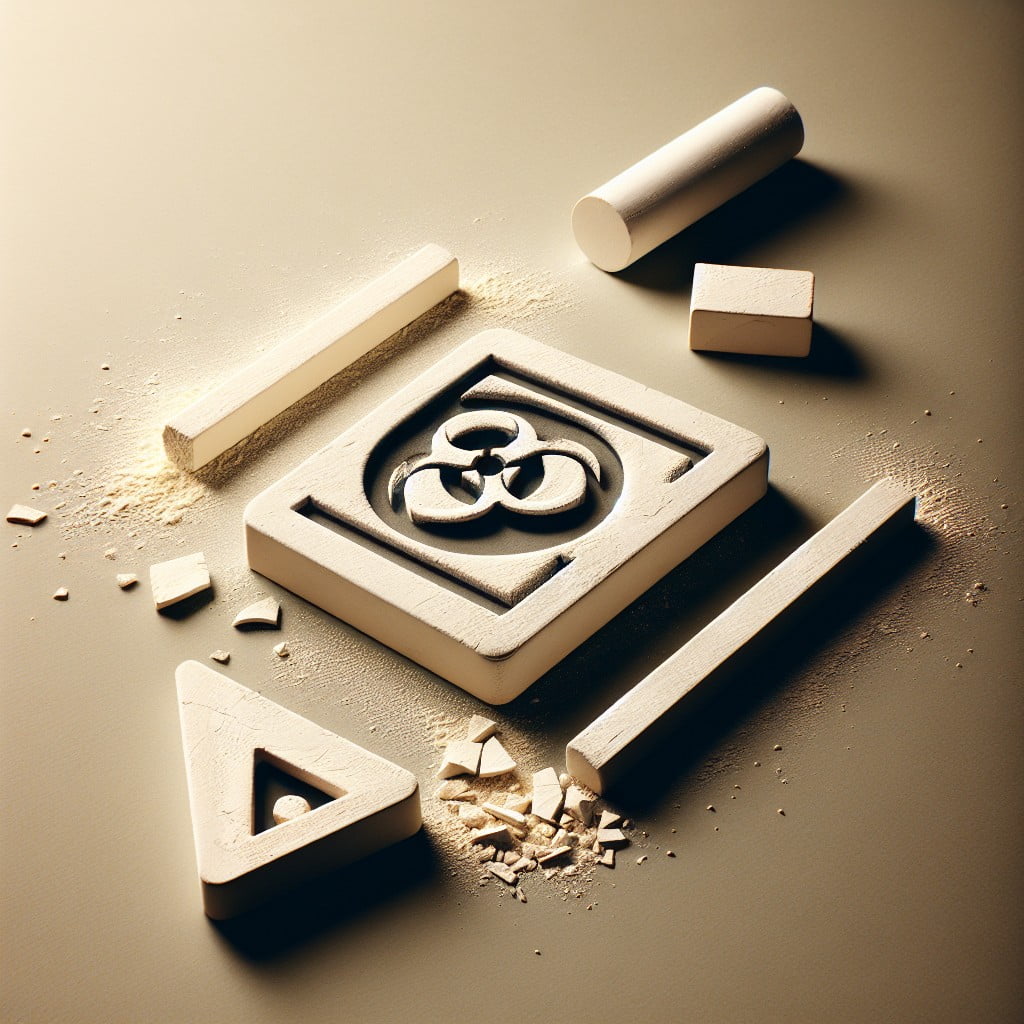
Traditional classroom chalk is primarily composed of calcium sulfate (CaSO4), a form of calcium carbonate, a substance found in rocks, shells, and pearls. The principal concern arises when chalk labeled as “anti-dust” contains crystalline silica, which can be hazardous when inhaled over a prolonged period.
This microscopic abrasive is a known respiratory irritant and can lead to a condition known as silicosis if inhaled in significant quantities. However, it’s worth noting that common exposure to chalk is minimal and does not typically lead to such extreme health issues.
In everyday classroom or artistic use, the levels of crystalline silica are considered too low to be harmful, making the chalk non-toxic in standard scenarios. Always check the labels of art supplies and seek non-toxic certification marks to ensure safe use, especially if dust might be inhaled.
Home Care for Chalk Ingestion
If someone has ingested a small amount of chalk, there are several first-aid steps that can be taken at home to ensure their safety:
1. Stay Calm: Keeping a calm demeanor is crucial. Panic can worsen the situation for both the caregiver and the individual who has ingested the chalk.
2. No Inducing Vomiting: Unlike some other toxic substances, do not induce vomiting unless directed by a poison control authority or a healthcare professional.
3. Check for Symptoms: Monitor for any signs of distress, such as difficulty breathing, severe coughing, or vomiting.
4. Rinse the Mouth: Have the person rinse their mouth with water to remove any remaining chalk particles.
5. Offer Liquids: If the person is able to swallow without difficulty, give them a small amount of water to help the chalk pass through their digestive system more easily.
6. Do Not Give Home Remedies: Home concoctions or treatments are not advisable without expert advice.
7. Poison Control Consultation: Even if the individual shows no immediate symptoms, contact poison control to get expert guidance on any additional steps to take.
Always follow the directions given by professionals and never hesitate to seek medical attention if you are unsure about the severity of the situation.
What to Expect At the Emergency Room
Upon arrival, the medical team will swiftly assess the patient’s vital signs, including pulse, temperature, breathing rate, and blood pressure. To understand the extent of chalk ingestion and its effects, healthcare professionals may ask about the amount and type of chalk consumed, the time of ingestion, and any symptoms experienced.
To ensure comprehensive care, they may perform a physical examination and order tests such as an X-ray to check for possible intestinal blockages, and blood tests to evaluate the body’s overall condition. While waiting for results, treatment typically involves supportive care, such as fluids for hydration to help the body flush out the substance.
If deemed necessary, the doctor might administer activated charcoal to absorb any remaining chalk in the stomach, preventing further absorption into the bloodstream. In rare cases, where a significant amount of toxic chalk has been ingested or if there is a risk of harm to the digestive tract, more invasive treatments like gastric lavage, also known as a stomach pump, might be utilized.
The stay in the emergency room will continue until the patient’s condition is stable and the risk of complications has reduced, ensuring the patient is safe to return home or be transferred to another department for further observation or treatment.
Outlook (Prognosis) for Chalk Ingestion
In most cases, swallowing a small amount of chalk is not expected to lead to serious symptoms or long-term health problems. Chalk is primarily composed of calcium carbonate, a non-toxic substance that is not harmful in small amounts. If the ingestion is accidental and involves only a modest quantity, the anticipated outcome is generally good.
However, the prognosis can vary depending on the amount consumed and the individual characteristics of the person who has ingested the chalk. Very large amounts can cause potential complications, especially in individuals with preexisting conditions that may make them more susceptible to the effects of foreign substances.
Promptly recognizing and responding to any signs of distress following the ingestion can influence outcomes positively. While complications are rare, it’s important to monitor for any changes or persistent symptoms and seek medical attention if there are any concerns. Moreover, supportive care at home or medical treatment, if necessary, further enhance the likelihood of a full recovery without any serious consequences.
Pica and Chalk Eating
Pica is a psychological disorder characterized by an appetite for substances with no nutritional value, such as ice, dirt, paint, or chalk.
Here’s what you need to know:
- Individuals with pica may crave and consume chalk due to its texture and consistency, not for its taste or nutritional content.
- This condition is more common in children and pregnant women, though it can occur in anyone.
- Pica can be a signal of underlying nutritional deficiencies, such as iron or zinc, which should be evaluated by a healthcare provider.
- It might also be associated with mental health conditions, including obsessive-compulsive disorder or autism.
- Consumption of non-food substances like chalk can lead to a variety of health complications, depending on the items ingested.
- Treatment involves addressing the nutritional deficiency or the mental health condition, coupled with behavioral interventions to discourage the non-nutritive eating habits.
Understanding pica and its connection to eating chalk is vital for recognizing when to seek medical advice and preventing potential health risks.
Causes of Chalk Consumption
Several factors may lead individuals, particularly children, to consume chalk. Often, it stems from simple curiosity, as young children explore the world by putting objects in their mouths. Additionally, the texture and sometimes colorful appearance of chalk might attract them.
In adults and some children, a condition known as pica can drive the ingestion of non-food items, including chalk. Pica is typically associated with certain nutritional deficiencies, such as iron or zinc, psychological conditions, or pregnancy.
Understanding these triggers can help in addressing the behavior effectively and ensuring the safety of the individual involved.
Risks of Regular Chalk Consumption
Regular consumption of chalk may pose several health risks. Firstly, it can lead to digestive disturbances. As the body cannot break down chalk, it may cause constipation or blockages in the intestines. Additionally, the habit could result in dental problems, such as tooth wear or cavities, due to the substance’s abrasive nature.
Chalk often contains contaminants, including heavy metals like lead or cadmium, which are harmful over time. Prolonged exposure to these can cause serious health issues, including kidney damage, anemia, and neurological problems. These contaminants can also affect the development of children, both cognitively and physically.
Moreover, the compulsive eating of non-nutritive items like chalk, a condition known as pica, may indicate nutritional deficiencies, particularly iron and zinc. Finally, the behavior of eating chalk regularly could signal an underlying psychological disorder that requires attention. Addressing these risks entails not only cessation of chalk consumption but potentially seeking medical and psychological support.
Medical Treatment for Chalk Ingestion
In cases where someone experiences discomfort after ingesting chalk, medical evaluation is advisable. The treatment approach generally focuses on symptomatic relief.
Activated Charcoal: Often administered in the emergency room, activated charcoal can help absorb the substance and limit bodily absorption.
Gastric Lavage: Also known as stomach pumping, this procedure may be considered if a large amount of chalk was consumed.
Laxatives: Might be used to expedite the passage of chalk through the digestive system.
IV Fluids: Dehydration from vomiting or diarrhea may require rehydration through intravenous fluids.
Monitoring: Vital signs are monitored to ensure breathing and heart rate remain stable, and that there are no signs of distress.
Medical professionals might also evaluate for signs of an underlying disorder, such as pica, if the consumption of chalk is regular or compulsive. The appropriate course of treatment is often determined after a thorough assessment by healthcare providers.
Strategies for Preventing Chalk Consumption
Limiting access to chalk is the first line of defense, especially for parents with young children known to explore their environment orally. Keeping chalk and similar substances out of reach ensures that accidental ingestion doesn’t occur.
Educating children about the appropriate use of chalk can also be effective. Highlighting that chalk is a tool for writing and drawing, not for eating, encourages correct usage. Interactive learning, including supervision and positive reinforcement when children use chalk properly, supports this approach.
Adults who feel compelled to consume chalk as a result of nutritional deficiencies should seek advice from healthcare professionals. Addressing underlying health issues may reduce the urge to eat non-food items.
If the chalk-eating is a symptom of pica, psychological intervention might be necessary. Cognitive-behavioral therapy and other behavioral strategies can help individuals with pica manage their cravings.
For schools and other educational settings, replacing traditional chalk with less appealing alternatives, like dustless chalk or whiteboard markers, might diminish the likelihood of ingestion incidents.
Regular checks for any leftover pieces of chalk can also help prevent accidental consumption. Ensuring that classrooms and other environments where chalk is used are cleaned thoroughly can decrease the chances of chalk ingestion.
Implementing these strategies can significantly mitigate the risks associated with chalk consumption and promote safer practices in environments where chalk is commonly used.
Poison Control Guidance
If you suspect someone has consumed a significant amount of chalk, contacting Poison Control is a crucial step. Here are key pointers to help navigate the situation:
- Keep the phone number for Poison Control (1-800-222-1222 in the United States) readily accessible at all times.
- Provide clear and concise information on the call, including the type and amount of chalk ingested, the age of the individual, and the time of ingestion.
- Follow the instructions given by Poison Control without delay. They may advise observation at home or immediate medical attention.
- Have the product container or the chalk itself on hand when you call, as specific ingredients may need to be identified.
- Remain calm; Poison Control professionals are trained to assist in both minor and serious incidents.
By adhering to Poison Control guidance, you ensure the best possible care for the individual in question.
This Really Happened: Cases of Chalk Ingestion
Instances of chalk ingestion, particularly among children, are not uncommon, given the accessibility and seemingly harmless appearance of chalk. In schools, where chalk is still widely used, young students may consume small amounts accidentally out of curiosity or confusion with candy due to its shape and size.
In one notable case, a kindergarten classroom was the setting of a mild scare when several children decided to taste pieces of white chalk during art time. Due to its non-toxic nature, the children experienced no serious health effects, but the incident raised awareness about the importance of supervising young learners during class activities.
Similarly, another incident involved a teenager with pica, a disorder characterized by eating items that are not typically considered food. The teen repeatedly consumed large quantities of chalk which ultimately led to a medical visit. The examination concluded that while the chalk had not caused poisoning, the behavior pointed to underlying nutritional deficiencies and psychological aspects that needed to be addressed.
These real-life scenarios emphasize the relevance of monitoring chalk use and educating individuals about the potential harms of ingesting non-food substances, even those deemed non-toxic.
For More Information: Resources and References
Seeking additional details on the topic can lead to a better understanding and safe practices. Organizations such as the American Association of Poison Control Centers provide valuable resources and can offer immediate assistance.
For those interested in learning more about pica, the disorder related to the craving of non-food items, medical journals and mental health resources such as the National Eating Disorders Association can be an informational asset.
Parents or educators desiring to mitigate chalk consumption among children can find guidance through child safety resources, including the Consumer Product Safety Commission.
Always consult with a healthcare provider for personalized medical advice in cases of ingestion or exposure to substances of concern.
FAQ
Is chalk harmful to humans?
Chalk is minimally toxic and not poisonous in small quantities, but frequent consumption can disrupt the digestive system and cause internal organ damage.
Is chalk toxic to children?
No, chalk is not considered toxic to children if ingested in small amounts.
Is chalk harmful to skin?
Chalk, primarily composed of calcium carbonate and calcium sulphate, can cause skin irritation along with other adverse health effects when humans are exposed to it.
Is chalk a carcinogen?
No, chalk is not a carcinogen, but inhaling large amounts of any dust, including chalk dust, may irritate the respiratory system and potentially lead to lung problems.
Can inhaling chalk dust cause respiratory issues?
Yes, inhaling chalk dust can lead to respiratory issues such as coughing, difficulty in breathing, and potential long-term damage to the lungs.
Are there adverse environmental impacts associated with chalk production?
Yes, chalk production can have significant environmental impacts, including ecosystem disruption and pollution due to mining, energy consumption, and waste generation.
Does consumption of chalk have any detrimental health effects?
Yes, consumption of chalk can cause digestive issues and lead to certain mineral deficiencies.
Recap:



